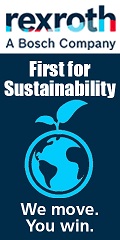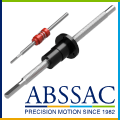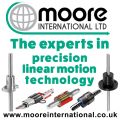
Posted to News on 20th Jan 2016, 16:09
3DEXPERIENCE platform in chocolate mould design
Many products are designed to appeal to our senses. Chocolate is no exception. Although taste is one of the reasons chocolate is so popular, its visual appeal also is important. Switzerland-based Max Riner AG makes sure chocolate looks appetising.
Its moulds are used by all of the world's major industrial chocolate-makers. These moulds must satisfy the artistic and business requirements of the chocolate producer as well as the technical specifications of the machine that will mass-produce the chocolate. Max Riner works with both the machine manufacturer and the final customer - the chocolate producer - to design the right mould for the job.
Founded 70 years ago by Max Riner, the company is now run by second and third generation. Urs Truttmann, engineering manager, says: "Our major business challenge is to be competitive on a global scale. Many low-cost mould manufacturers are challenging us and because our cost structure in Switzerland is higher than in many other countries, we cannot compete at this level. We are, however, known for the excellent quality of our polycarbonate moulds and the fact that we are very flexible and can adapt to any type of demand. Our objective is to develop these assets further and to transform them into a competitive advantage."
When a chocolate producer has an idea for a new chocolate product, they can rely on Max Riner to develop it for them or to help fine-tune the design proposal. Truttmann says: "Every mould is tailor-made to customer specifications. We are involved from the early stages of chocolate development and bring our mould design experience to the table to create a chocolate mould that will produce an aesthetically appealing chocolate. If the mould is not correctly designed, the demoulding process can be very tricky, and may even damage the chocolate."
Developing moulds for industrial chocolate production is complex because of the very nature of mass producing chocolates. Truttmann explains: "For example, a mould can have 20 cavities to produce 20 chocolates and each cavity has small details such as logos or reliefs that print specific "engravings' on the chocolate.
"At the mass production level, every chocolate has to have exactly the same weight; for legal reasons they cannot be underweight, and for economic reasons they should not be overweight. Our job is to make sure every cavity has the same volume and same dimension. Moreover, moulds must be able to resist "industrial treatment' as they are washed, hammered, vibrated and twisted during the production process. Thus, they need to be flexible and resilient. They must be designed in such a way that makes chocolate easier to demould and does not exert unnecessary strain on the mould. These are all very big challenges for us."
In the past, Max Riner designed its moulds and tooling in 2D using a variety of software products. But as competition in its sector became fierce, the company needed to streamline its processes, boost creativity and precision, and improve the way it collaborates with customers. Truttmann says: "We previously used one 2D tool to create the moulds and tooling, another tool to create the surfaces, and then used the resulting 3D data to create the machine control programs. It was not a clean process, and we often found ourselves having to redo our designs, which interrupted the entire chain. Incorporating customer feedback was also a difficult process. We needed more data integration and compatibility."
New team, new vision
As part of the company's new strategy, Max Riner's management chose to modernise and unify its software installation. It chose Dassault Systèmes' 3DEXPERIENCE platform and its Single Source for Speed industry package. The company chose Single Source for Speed, which includes CATIA for design and ENOVIA for collaboration and data management, to manage its mould and mould injection tooling development.
Truttmann says: "Before CATIA, the mould and tooling were not linked. This would generate a lot of work if we needed to make minor changes. Now, the integrated approach provided by Single Source for Speed saves us considerable time because everything is automatically updated. For example, if we needed to tighten the tolerances while producing a stamp for a cavity, we would have had to manually add the new tolerance every time we produced a new drawing, if we remembered to do it at all. Now, we can make the change once and every new drawing has the new tolerances included."
With Single Source for Speed, Max Riner uses ENOVIA to manage all CAD (design simulation) data and to keep track of design versions. Truttmann says: "ENOVIA helps ensure we are always working with the right version of a model. We soon plan to manage our production BOM (bill of materials) with ENOVIA and to use it to connect all CAD data with our ERP system."
Truttmann says: "With ENOVIA 3DLive, the entire company can access all CAD information at any time and visualise past molds or those under development. Our production engineers, in particular, no longer have to ask designers for information; they can simply access it on their own."
Max Riner has experienced significant benefits in terms of cycle time. Truttmann says: "In general, tasks that would normally take half a day, now only take half an hour. This means we can accept more business because our turnaround time is shorter. Whereas a complete project used to take up to three months, from initial request to product delivery, with half of it devoted to engineering, we are now able to reduce engineering time to approximately three weeks. This leaves more time for other activities and, of course, more time for innovation."
With Single Source for Speed, Max Riner can respond to customers' requests for changes faster. Truttmann says: "Instead of waiting a few hours between change requests, we respond almost immediately. Customers are consequently more involved in the design process since we can show them their mould and the way it evolves after every change in 3D. The software is so fast that we can generate a great number of different design options in a few hours. It adds a new dimension to our relationship with our customers. Moreover, thanks to CATIA, models are more precise and of higher quality, which has drastically reduced the number of moulds rejected by production."
The working atmosphere at Max Riner engineering team has changed for the better since the company started using the 3DEXPERIENCE applications. Truttmann says: "In the past, even though employees would spend a lot of time and work very hard, they would still end up making mistakes because the software they were using did not allow them to create the quality products that were expected of them. This created a sense of frustration. Today, the mood has changed for the better. Engineers can finish their work sooner and still attain the desired level of quality. Team spirit has greatly improved."
Intelligent moulds
Max Riner's management will take advantage of many of the technological advances of the past few years. The 4th Industrial Revolution with the Internet of Things has impacted the production level at Max Riner. Recently, the company equipped its moulds with radio frequency identification tags (RFID) so its customers can monitor a mould's lifecycle.
Truttmann says: "The industry needs a clearer picture of individual mould lifecycles. Intelligent moulds enable chocolate producers to track each one as it goes through the production process. They can see how often moulds are washed, twisted, hammered and vibrated, and have a more precise view of each mould's lifecycle. When you consider that one defective mould can halt production for a whole day, and cost chocolate producers millions, it is clearly an advantage to be able to monitor the lifecycle of every individual mould."
In the future, Max Riner plans to optimise energy consumption of its injection moulding process. Truttmann says: "We would like to use virtual simulation to increase the energy efficiency of this process. An optimised process helps companies use fewer materials, which will save them money. It can also benefit the environment since by optimizing the tool layout, they can reduce cycle times and, consequently, use less energy. It is an area in which the applications of the 3DEXPERIENCE platform can be of great help to us."
For further information about the 3DEXPERIENCE platform please go to www.3ds.com.

































